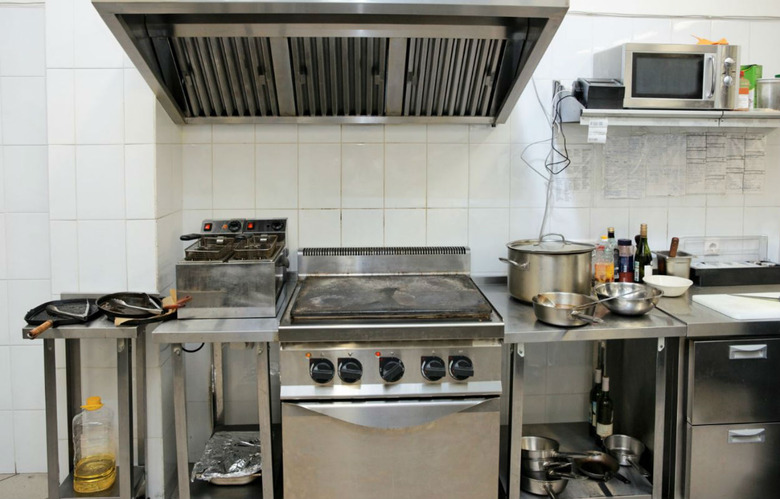If A Restaurant Has A Low Health Department Rating, Is It Really Unsafe To Eat There?
Nothing gives us pause as we're about to walk into a restaurant like a low grade from the local board of health. In New York, for example, every restaurant is subject to random inspections, and while some walk away with an A, others remain open after receiving a C (If a restaurant receives a C three times, it's shut down until it cleans up its act). So here's the question: If a restaurant doesn't have an A — or the local equivalent — should you still eat there?
Restaurants can rack up inspection points for a wide variety of reasons. Some involve filth flies or mouse droppings in food prep areas, or food being held at temperatures that can harbor bacteria. Other reasons include condition of cooking equipment and utensils, improper maintenance, cleanliness of food contact surfaces (and non-food contact surfaces, like floors), employees not using gloves, damaged cans, discolored cutting boards, and improper handwashing sinks.
Health inspectors always have the customers' safety in mind, but not all grades are created equal. If a food prep area is covered in mouse droppings, that poses a much larger problem than improper placement of a sink. Some violations that have nothing to do with food whatsoever include lack of a self-closing door to the bathroom, poor lighting in the kitchen, and a lack of handwashing signs over each sink.
Restaurants pay thousands of dollars to hire consultants to come to their kitchens and make sure they're prepared for health inspections. Some view the inspectors as fair, but others view them as nitpicky and unreasonable. The inspection system isn't cut and dry, and for all intents and purposes a restaurant can fail inspection and still look completely clean to the naked eye. And that's why the choice is completely up to you whether you want to eat at a restaurant that has a low rating. We suggest that if you're concerned you look up the rating online; most cities allow anyone to access their archives.
